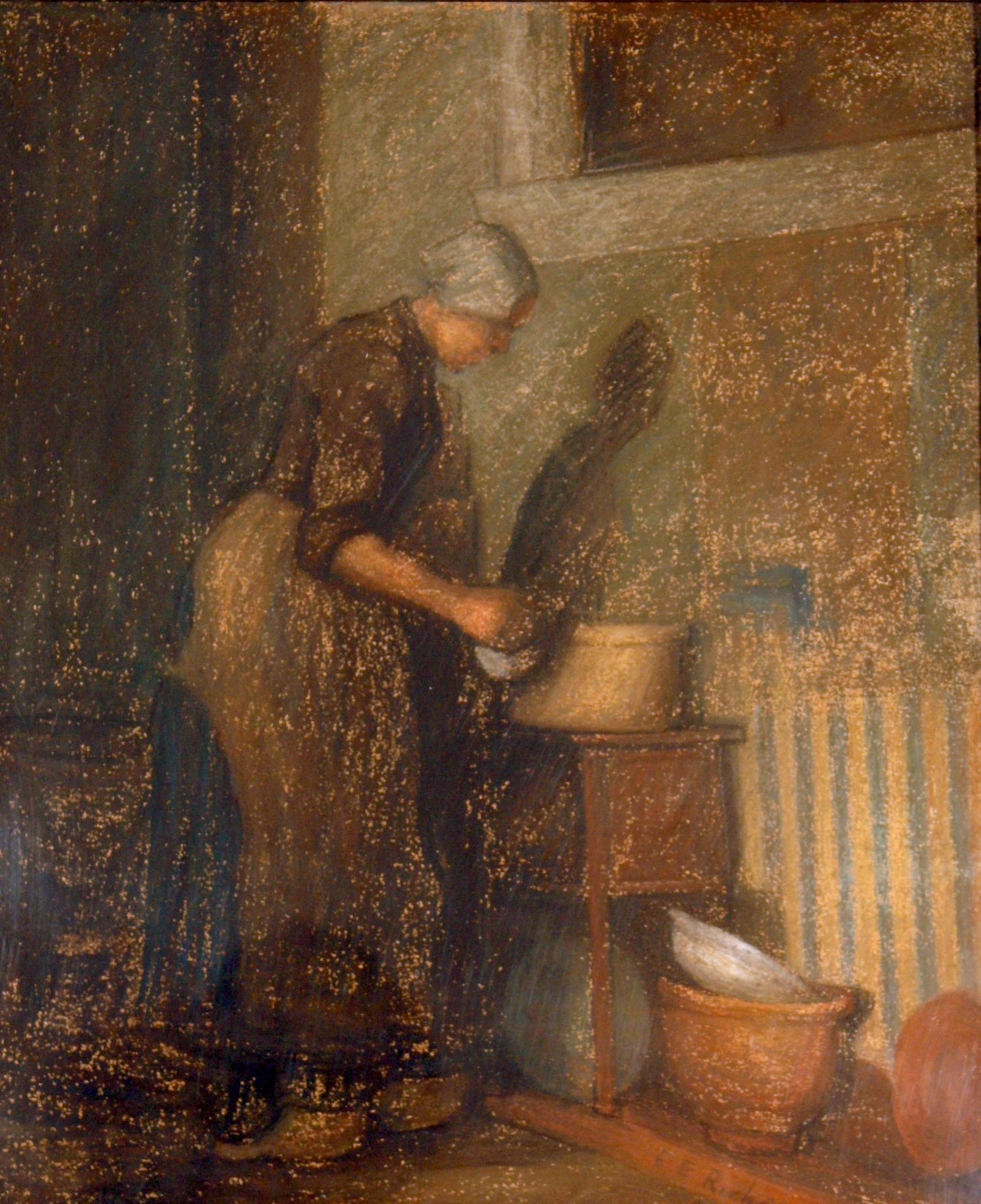Ella E. Richards (1871-1946)

"Ella E. Richards has just completed two important portrait commissions, one [of which is] a full-length presentment of Nell Morgan Nash, violinist. The subject is shown in a full standing pose, wearing a black velvet gown, cleverly handled to enhance the brilliancy of her complexion. In one hand her violin is gracefully held and the composition is able and interesting. It is also an excellent likeness." (American Art News 06-21-1913 p.3)
Nell Morgan Nash, the subject of The Violinist, was a well-known concert violinist at the time who also directed several music programs including at the Glendale School of Music in Stockbridge MA and at La Grange College in Athens GA.
In 1950 the painting became the first work by a female artist to be added to HMA's collection. The portrait is life-sized, which is to say that the painting is quite big.
Ella Richards was primarily a portraitist who was born in Virginia sometime in the last half of the 1800's. She studied art in Baltimore, at the Art Students League in New York City, and in Paris at the Académie Julian. She was an established artist by the end of the 1890's, winning a medal at the Omaha Exposition of 1899; and she was regularly invited to exhibit her works throughout the country for at least the next 20 years. Her American addresses over the years included Virginia, Baltimore, Massachusetts and New York City.
In the 1920's Richards rented one of the 170 studios built directly above midtown Carnegie Hall in New York City. Those apartments had trap doors that could be opened to directly hear the concerts from the concert hall.
"When Andrew Carnegie built the Towers over the Hall ,,, he intended for the studios to be occupied by working artists. It wasn't cultural altruism - the rents were a source of revenue. The architect Henry J. Hardenbergh ... designed the ... studios with [34 foot] high ceilings and north-facing skylights. The roster of names who lived and worked here is stellar: Isadora Duncan, Agnes deMille, Garson Kanin, Marlon Brando, Leonard Bernstein." (New York magazine Dec. 30, 2007, about the demise of the studio rentals.) Wildord Conrow and his wife rented one of these studios later than Richards, and the Whiteners visited the Conrows there. (Laura was a friend of Wilford Conrow's wife.)


After Ella's death, Paul Whitener approached her sister Laura about purchasing two of Ella's works for HMA. Laura, in a letter to Paul dated July 30, 1951, responded that "I am not yet ready to part with the two pictures you mention. ... I would, however, like my sister to be represented in the Museum in oil as well as pastel, so I will be glad to present The Violinist, which is considered one of her finest works." The pastel Laura refers to is A Dutch Interior which had been exhibited at the Trans-Mississippi Exposition in 1898 and which Laura also donated to HMA.
The Violinist is also a rather dramatic illustration of the value of proper conservation of any work of art. As had been the practice for hundreds of years and into today, Richards had completed The Violinist with a layer of varnish, both to protect the surface and to intensify the brilliance of the pigments. Over the years, that varnish had yellowed; and when the painting was selected for HMA's spring 2017 Woman Made exhibit, it looked dull and uninspiring and not at all as it must have for the viewers in 1913. Thus, the surface was carefully cleaned by a professional conservationist before the painting was exhibited, happily bringing out the original brilliant colors and details that had indeed been preserved by the varnish. (Contrast the pre-treatment detail on right with the post-treatment work at top.) .
First posted October 14, 2018. Additional information March 2024.
Post by Karin Borei, HMA Project Coordinator, writer and editor as needed, and HMA blogger since our blog's inception in March 2015.




